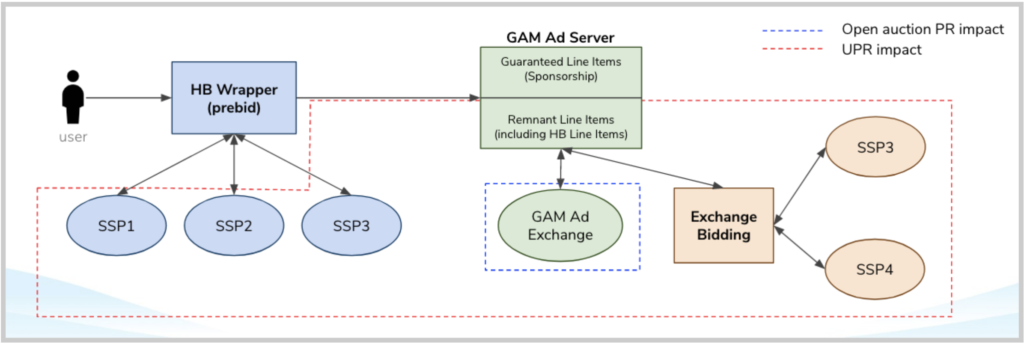(Part 1 of a 3 part series on Best Practices for Unified Pricing Rules) – Go to Part 2 or Part 3
As part of its transition to unified first price auctions, Google is deprecating its Pricing Rules, that Publishers used to use to manage their floors in Google AdX, and replacing them with Unified Pricing Rules – “UPR”.
This change actually has much deeper effects on Publisher yield management and monetization than any other feature change Google has introduced in the recent past. This blog series aims to guide you through the migration from Pricing to Unified Pricing Rules, and also help you keep control of your revenue after the transition.
We will publish the second article of the blog series soon. Meantime, you can directly download the complete white paper with the three articles by clicking below:
Reminder – Main Differences Between Pricing Rules & UPR and Risks for Publishers

Main Differences Between Pricing Rules & UPR
Before we get started, here is a quick review of the main differences between old Pricing Rules and new Unified Pricing Rules:
- UPR apply to AdX (“Authorized buyers”) and EB demand… plus Remnant “DFP”(DoubleClick for Publishers)line items… :
- which means they apply to Header Bidding as a result plus mediation & backfill line items… while Pricing Rules only apply to “Authorized buyers”.
- Still, if you include brand and/or size targeting into a UPR, please note that it will not apply to Remnant line items, which means it will not apply to Header, because GAM “does not know” what Brand and/or size is activated on the line item.
- No buyer targeting
- No “Anonymous” pricing – Branded & Semi-transparent only
- Limit set at 200 UPR max vs. soft limit for Pricing Rules
- No buyer/brand blocking option
- No priority management – when multiple rules overlap the highest floor applies
Application scope of UPR compared to Pricing Rules

Source: Adomik Team of Monetization Experts
For Advanced readers: note that the floor of UPR will be shared with AdX “Authorized buyers” and EB SSPs within bid requests… but not with Header SSP partners who will then bid “blind” as a result.
Adomik recommends Publishers to use UPR rather than “Floor line items” in GAM to define their floor policy, so that floor values are properly shared with buyers (which is key for them to take it into account in their buying algorithm). For SSPs in the header, it might make sense to replicate some UPR floors into their console:
- to inform them of the floors that are being applied.
- to avoid creating “SPO” situation that are destroying value for the Publisher.
Risks for Publishers
Based on these differences, Unified Pricing Rules present 2 main risks for Publishers:
- A risk of drop in revenue if they are not properly implemented: UPR could induce
- a loss of programmatic revenue due to a “certain” loss of control in optimization ( typically anonymous revenue could take a hit, some optimization against dedicated buyers will not be possible, new floors could cut off revenue generated from low bids, etc.)
- and a loss in remnant revenue (UPR can prevent Header line items from delivering).
- A risk of “Bid shading”: Optimization is now on first price auction, no longer on 2nd price, so it requires dedicated optimization schemes to protect revenue from buyers dropping the value of the bids.
Properly setting-up and managing their Unified Pricing Rules is thus a key activity for Publishers.
(Part 1 of a 3 part series on Best Practices for Unified Pricing Rules) – Go to Part 2 or Part 3

